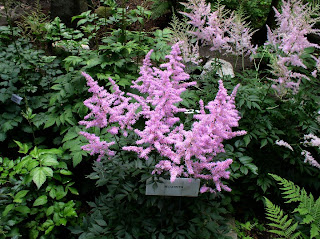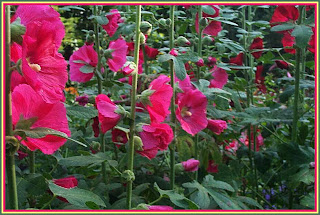
Thursday, March 11, 2010
Another fine spring day in Vermont with temperatures starting at 18 degrees this morning and rising into the high 40's here, almost to 50 in other parts of Vermont. The temperature spread made for free flowing maple sap and some fine maple syrup for the hundreds of producers in Vermont.
Friend Harold Cross from Morrisville just called tonight to confirm our syrup order for 10 gallons. Although Harold always taps and boils for himself, he also buys some more and last year Gail managed to turn our friendship into Harold the syrup delivery person. Harold would have helped us out anyway because that's the kind of person he is. He's one of those Vermonters I know would come at any time, for any reason if we needed a hand. Deliverying good maple syrup isn't a crisis but it sure is helpful. Thanks, Harold!
Along with smoke and steam rising from sugar houses, this time of year sees gardeners getting out into their gardens to clean up last year's leftovers. I have noticed lots of comment on various blogs, Facebook, and Twitter about people cleaning up their astilbes. The picture up top is intended to serve as my annual cautionary reminder that cleaning up astilbes can be hazardous to your health. Do beware!
As astilbe stems desicate in the fall they become very brittle. As they break it's an uneven event that produces needlelike pieces that can penetrate a finger or palm in nano seconds. Wear gloves and go slowly, grabbing leftovers from the side and cutting what will reasonably fit in your clippers, avoiding extra fingers of course.
Although many folks plant an astilbe here or there, Gail is into masses when she can find the space or the plant material. Here's a picture of some masses that are along a forest line just in back of a small daylily nursery at our house. At bloom time this is quite a site.
Friend Harold Cross from Morrisville just called tonight to confirm our syrup order for 10 gallons. Although Harold always taps and boils for himself, he also buys some more and last year Gail managed to turn our friendship into Harold the syrup delivery person. Harold would have helped us out anyway because that's the kind of person he is. He's one of those Vermonters I know would come at any time, for any reason if we needed a hand. Deliverying good maple syrup isn't a crisis but it sure is helpful. Thanks, Harold!
Along with smoke and steam rising from sugar houses, this time of year sees gardeners getting out into their gardens to clean up last year's leftovers. I have noticed lots of comment on various blogs, Facebook, and Twitter about people cleaning up their astilbes. The picture up top is intended to serve as my annual cautionary reminder that cleaning up astilbes can be hazardous to your health. Do beware!
As astilbe stems desicate in the fall they become very brittle. As they break it's an uneven event that produces needlelike pieces that can penetrate a finger or palm in nano seconds. Wear gloves and go slowly, grabbing leftovers from the side and cutting what will reasonably fit in your clippers, avoiding extra fingers of course.
Although many folks plant an astilbe here or there, Gail is into masses when she can find the space or the plant material. Here's a picture of some masses that are along a forest line just in back of a small daylily nursery at our house. At bloom time this is quite a site.

Years back I planted 35 different astilbes (just below) in a garden for Gail. They have naturalized since then and provide a stunning backdrop to a line of hostas and are a nice under planting to a couple small trees. There are thousands of seedlings under a Discovery Elm that need a little attention--perhaps this summer-- to really determine if there's anything of merit there to dig out and reproduce.

When our gardens and sales area were here at our house, we lined the potted astilbes under the sugar maples by the road and used Parker-Davis Step Stake markers to delineate names, descriptions and prices. The astilbes were at their best from late June into mid August and slowed the traffic as people enjoyed the colors.

I have to admit that despite some very nice comments on my photograhy, I am not a photographer, I am a person with a pocket full of rechargeable batteries and buttons on my digitals cameras that I push-push-push. I have always had trouble photographing astilbes as they move in the wind and have millions of focal points. A few years ago I just moved to closeups and that's where I'll stay. The advantage for someone unfamiliar with these plants is the opportunity to see the way hundreds of little blooms make up the flower scape. Here is Astilbe 'Bressingham Beauty' just below. I've named a few more too for you to see. Take a quick peak.
 Visions
VisionsHere at Vermont Flower Farm I have to admit our supply of astilbes changes annually, both in number of varieties and quantity available for sale. Obviously some are more popular than others but it's not always easy maintaining a good supply or adding some of the older ones in quantity. When I finish the hosta and shade garden I intend to line out some of every astilbe we have so we can do a better job providing a flower that is very dependable in this climate, beautiful in the garden or as a cut flower, and deer proof about anyplace.
Writing from the mountain above Peacham Pond where it's quiet except for Gail's occasional laughter as she finishes up Ben Hewitt's new book, The Town That Food Saved.
George Africa
The Vermont Gardener
Vermont Flower Farm: Always accepting orders by web or phone
On Facebook: http://companies.to/vermontflowerfarm
On Twitter: http://twitter.com/vtflowerfarm
Writing from the mountain above Peacham Pond where it's quiet except for Gail's occasional laughter as she finishes up Ben Hewitt's new book, The Town That Food Saved.
George Africa
The Vermont Gardener
Vermont Flower Farm: Always accepting orders by web or phone
On Facebook: http://companies.to/vermontflowerfarm
On Twitter: http://twitter.com/vtflowerfarm





















































